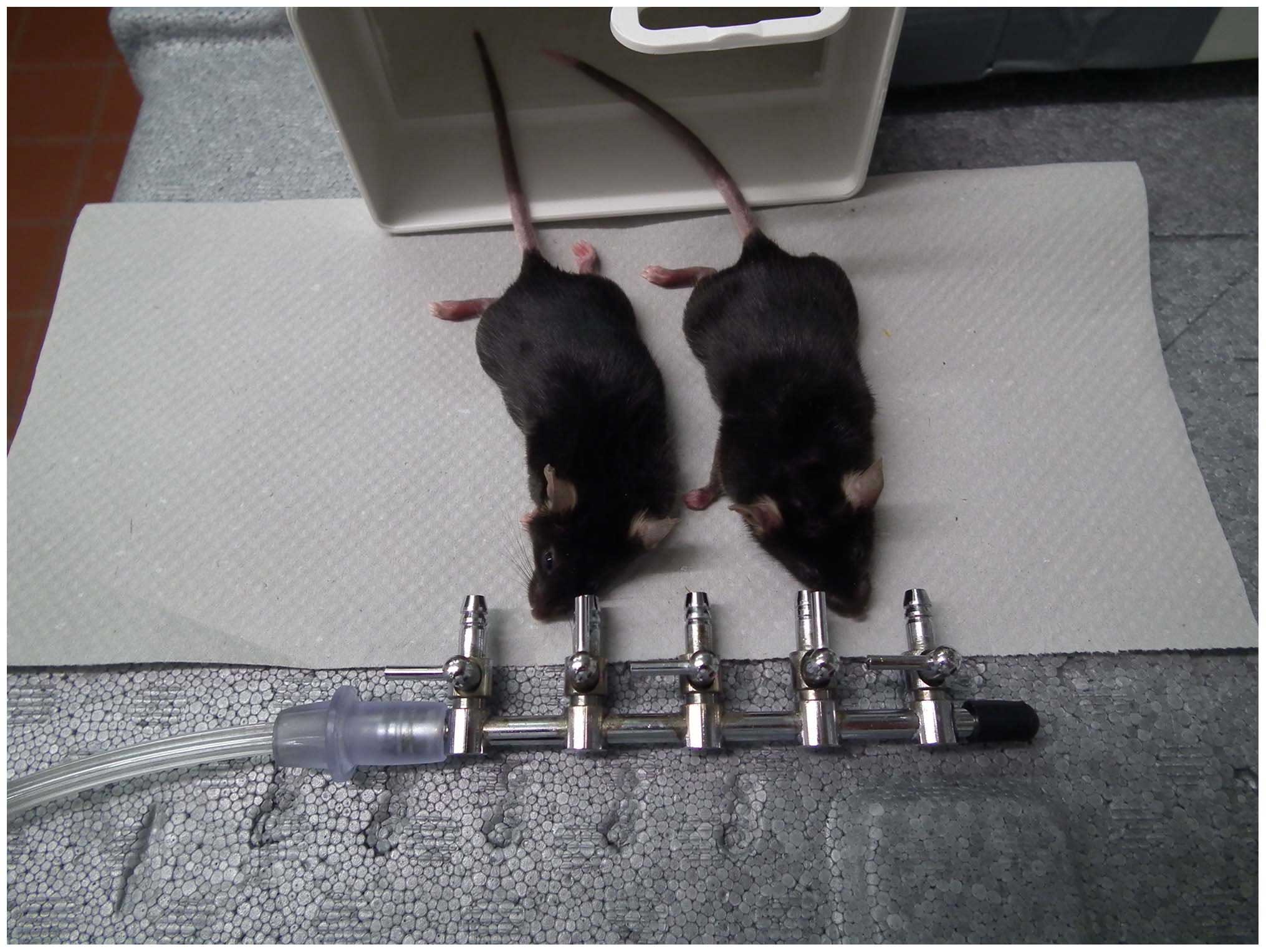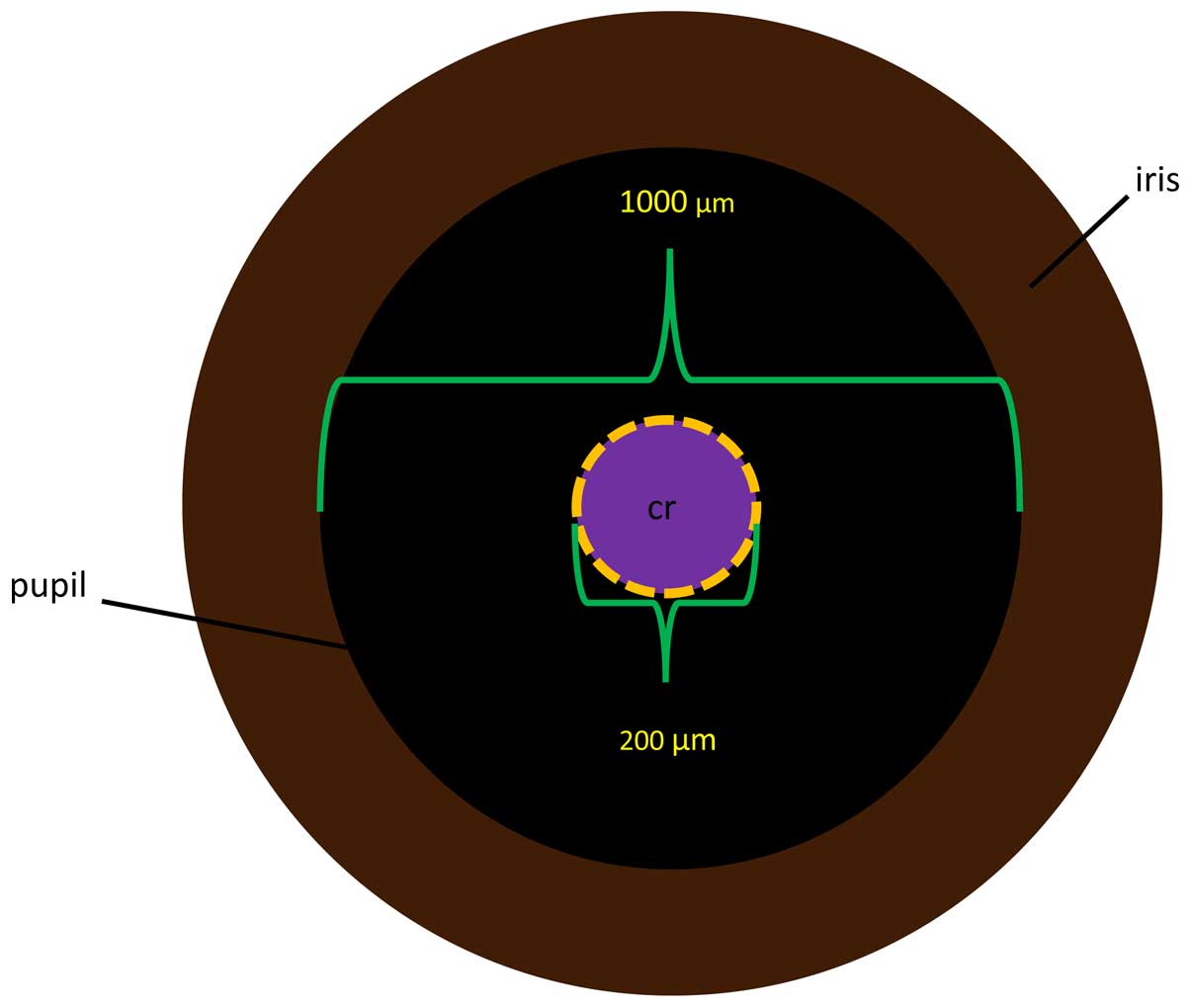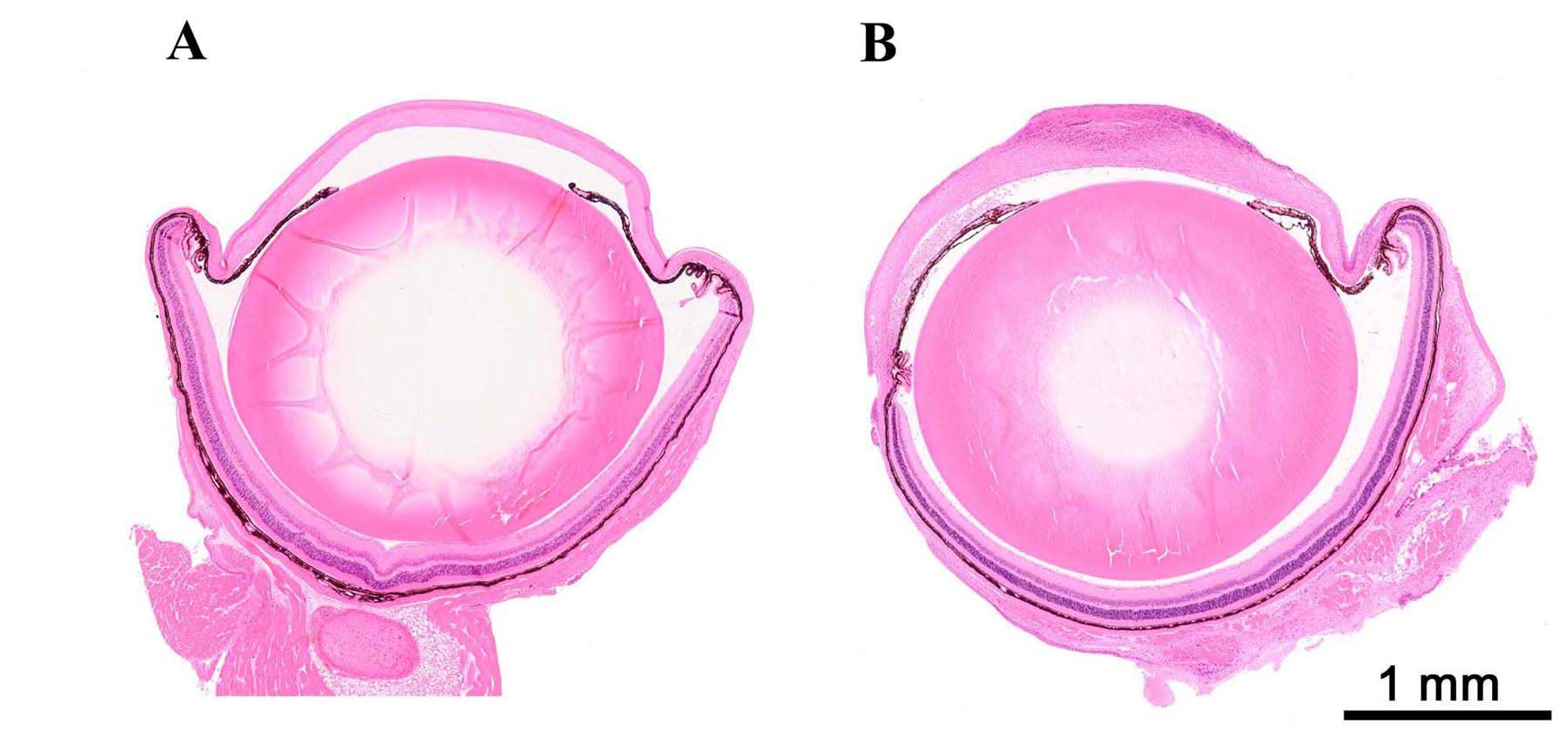Gaseous nitric oxide for the local treatment of bacterial keratitis in mice
- Authors:
- Published online on: November 30, 2016 https://doi.org/10.3892/br.2016.821
- Pages: 75-78
Abstract
Introduction
Bacterial keratitis is a major cause of blindness worldwide with a high incidence (1). This is due to low hygiene standards and water quality with a greater risk of infection in poor countries. In addition, the widespread use of contact lenses and associated complications in wealthier countries contributes to severe keratitis (2,3). Staphylococcus aureus and Pseudomonas aeruginosa are two predominant gram-positive and gram-negative bacterial strains responsible for causing this disease (1,4,5). The resistance of bacteria to antibiotics is reducing the efficacy of bacterial keratitis treatment. Therefore, research into the development of novel therapeutic approaches is essential. In this regard photodynamic inactivation has been in experimental and clinical use throughout the last decade (6–8). Research on cystic fibrosis established an antimicrobial effect of gaseous nitric oxide (gNO) in infections with P. aeruginosa using a rat model (9). Furthermore, a study in white rabbits demonstrated that a treatment using 200 ppm gNO significantly reduced the bacterial load in wounds of the dorsal skin surface (10). Thus, in view of the possibility of a surface treatment for keratitis, this therapeutic strategy demonstrated a feasible approach.
The aim of the current study was to evaluate gNO application as a potential treatment of experimental keratitis in vivo for the first time. However, this series of experiments did not serve as proof of the anti-inflammatory effect of gNO.
Materials and methods
Animals and anaesthesia
Young (age, 9–10.5 weeks) female C57BL/6 mice [n=19; standard housing conditions (3–5 animals per cage) with 12-h light/dark cycle, minimum 70% humidity and chow/water were provided ad libitum; Janvier Labs, Saint-Berthevin Cedex, France] were used in the present study. All animal care and experimental procedures were approved by the local governmental animal care committee (permit no. 58/2013) and were conducted in accordance with European legislation on the protection of animals (Directive 2010/63/EU) and National Institutes of Health (NIH) guidelines on the care and use of laboratory animals (NIH publication no. 85–23 Rev. 1985). Animals were anesthetized via i.p. injection of ketamine (75 mg kg-1 body weight; Pharmacia GmbH, Erlangen, Germany) and xylazine (15 mg kg-1 body weight; Rompun, Bayer, Leverkusen, Germany).
Infection and treatment
Three scratches (length, 2 mm) were made in the centre of the cornea using a 27-gauge syringe, subsequently 5 µl of the inoculum was pipetted onto the cornea [according to (4)]. Carprofen (Rimadyl®; Zoetis Schweiz GmbH, Zürich, Switzerland) was injected during anaesthesia. For the inoculum, the multi drug resistant P. aeruginosa strain 54 (clinical isolate, collected in 2009 at the Institute of Medical Microbiology and Hygiene, Saarland University Medical Center, Homburg, Germany. The resistance profile of PA54 was determined using the automated VITEK 2 system (BioMérieux GmbH, Nürtingen, Germany) was cultured on blood agar plates (Trypticase Soy Agar II, 5% Sheep Blood; BD GmbH, Heidelberg, Germany) for 24 h, and suspended in 10 ml 2% Luria Bertani (LB) broth (LB Broth; Difco, Saint Egrève, France) for an overnight culture (37°C). The overnight culture (100 µl) was diluted in 10 ml 2% LB for another 3 h of culturing (37°C) and finally the suspension was adjusted using a photometer to an optical density of 10 at a wavelength of 600 nm and then used for inoculation. Only one eye from each animal was infected, with certain non-infected eyes analyzed to serve as controls. Eyes were either not infected or infected, and the infected eyes were either treated or not treated (uninfected/untreated, n=6 eyes; infected/treated, n=11 eyes; infected/untreated, n=8 eyes).
Twenty-four hours post infection the animals were treated under deep anesthesia as described above. For NO treatment, the infected eyes were exposed to gas (Praxair Deutschland GmbH, Düsseldorf, Deutschland) consisting of nitrogen and NO (200 ppm) for 30 min under anesthesia. A gNO stream with a velocity of 5 m/sec was directed to each eye using a nozzle. This nozzle was placed at a distance of 1 cm from the eye (Fig. 1). Three days after the infection (in two cases, 7 days after the infection to assess whether treatment required >3 days to develop an effect) the animals were sacrificed by cervical dislocation.
Histology and evaluation
Their eyes were enucleated, histologically processed, and stained with hematoxylin and eosin. From each eye, five subsequent sections (thickness, 5 µm, with a distance of 50 µm from each other) from the center of the cornea (middle of the pupil) were obtained for evaluation (Fig. 2). The maximum corneal thickness was measured (CellSens Standard 1.8.1; Olympus Deutschland GmbH, Hamburg, Germany) and the mean value was taken. The severity of hypopyon was evaluated with a self-defined score, from 0 to 3 (0, no hypopyon; 1, mild hypopyon; 2, moderate hypopyon; 3, severe/massive hypopyon; Fig. 3).
Statistical analysis
Statistical analysis was performed using GraphPad Prism 5 (GraphPad Software, Inc., La Jolla, CA, USA). The Mann-Whitney U test or the χ2 test were used for inferential statistics. Mean values and standard errors of the mean (SEM) were calculated and two-sided P<0.05 was considered to indicate a statistically significant difference.
Results
Maximum corneal thickness as an indication of corneal inflammation
Concerning the maximum corneal thickness, the experiments resulted in mean values of 124±4µm (mean ± SEM) for uninfected/untreated, 168±20 µm (mean ± SEM) for infected/untreated and 214±23 µm (mean ± SEM) for infected/treated animals (Fig. 4A and B). The infection led to a significant increase in the maximum corneal thickness. A significant influence of the gNO treatment was not identified for maximum corneal thickness.
Occurrence and severity of hypopyon
Similarly, a significant influence of the gNO treatment was not identified with regard to the severity of hypopyon (Fig. 4C).
Discussion
Treatment with gNO is a novel and innovative approach as no resistance has yet been identified for this bactericidal mechanism. This initial in vivo study did not indicate an anti-inflammatory effect using gNO. In a previous study regarding bacterial pneumonia that was induced by P. aeruginosa, no influence of NO treatment was observed on the inflammation parameters, which was consistent with the present results (9). By contrast, the authors identified a marked reduction in the bacterial load of pseudomonades. The present study hypothesized that i) bacteria were killed and ii) corneal inflammation was reduced following gNO treatment. It might be a similar situation in our keratitis model as in the pneumonia model described in the study by Miller et al (9) where inflammation was not reduced in contrast to the bacterial load. The bacterial load was not determined in the present study, as bacterial load can only be determined in the whole globes, but not separately within the cornea alone, due to the small structure of the murine cornea. However, the hypothesis remains that gNO application kills bacteria within the cornea, but alternative experimental approaches are required. Another aspect of the study was the technical administration of gNO treatment. This treatment strategy was established specifically for the current study. The gas application could be improved in future to ensure that a constant gNO concentration is applied to the surface of the cornea, for example, using an eye chamber, although this may be difficult due to the size of the mouse eye.
In conclusion, the aim of the current study was to evaluate gNO application as a treatment for experimental keratitis; this is the first study, to the best of our knowledge, to attempt to treat keratitis using this method. No anti-inflammatory effects were observed; however, this method should be investigated further to evaluate the bactericidal effects in vivo.
Acknowledgements
The authors would like to thank Ms. Ann Soether for language editing and Ms. Tina Wiesen-Philipps for help with the manuscript.
References
|
Ong HS and Corbett MC: Corneal infections in the 21st century. Postgrad Med J. 91:565–571. 2015. View Article : Google Scholar : PubMed/NCBI | |
|
Lorenzo-Morales J, Khan NA and Walochnik J: An update on Acanthamoeba keratitis: Diagnosis, pathogenesis and treatment. Parasite. 22:102015. View Article : Google Scholar : PubMed/NCBI | |
|
Young G, Young AG and Lakkis C: Review of complications associated with contact lenses from unregulated sources of supply. Eye Contact Lens. 40:58–64. 2014. View Article : Google Scholar : PubMed/NCBI | |
|
Girgis DO, Sloop GD, Reed JM and O'Callaghan RJ: Susceptibility of aged mice to Staphylococcus aureus keratitis. Curr Eye Res. 29:269–275. 2004. View Article : Google Scholar : PubMed/NCBI | |
|
Marquart ME: Animal models of bacterial keratitis. J Biomed Biotechnol. 2011:6806422011. View Article : Google Scholar : PubMed/NCBI | |
|
Makdoumi K, Mortensen J, Sorkhabi O, Malmvall BE and Crafoord S: UVA-riboflavin photochemical therapy of bacterial keratitis: A pilot study. Graefes Arch Clin Exp Ophthalmol. 250:95–102. 2012. View Article : Google Scholar : PubMed/NCBI | |
|
Stachon T, Wang J, Song X, Langenbucher A, Seitz B and Szentmáry N: Impact of crosslinking/riboflavin-UVA-photodynamic inactivation on viability, apoptosis and activation of human keratocytes in vitro. J Biomed Res. 29:321–325. 2015. View Article : Google Scholar : PubMed/NCBI | |
|
Wu MF, Stachon T, Wang J, Song X, Colanesi S, Seitz B, Wagenpfeil S, Langenbucher A and Szentmáry N: Effect of keratocyte supernatant on epithelial cell migration and proliferation after corneal crosslinking (CXL). Curr Eye Res. 41:466–473. 2016. View Article : Google Scholar : PubMed/NCBI | |
|
Miller CC, Hergott CA, Rohan M, Arsenault-Mehta K, Döring G and Mehta S: Inhaled nitric oxide decreases the bacterial load in a rat model of Pseudomonas aeruginosa pneumonia. J Cyst Fibros. 12:817–820. 2013. View Article : Google Scholar : PubMed/NCBI | |
|
Ghaffari A, Jalili R, Ghaffari M, Miller C and Ghahary A: Efficacy of gaseous nitric oxide in the treatment of skin and soft tissue infections. Wound Repair Regen. 15:368–377. 2007. View Article : Google Scholar : PubMed/NCBI |













